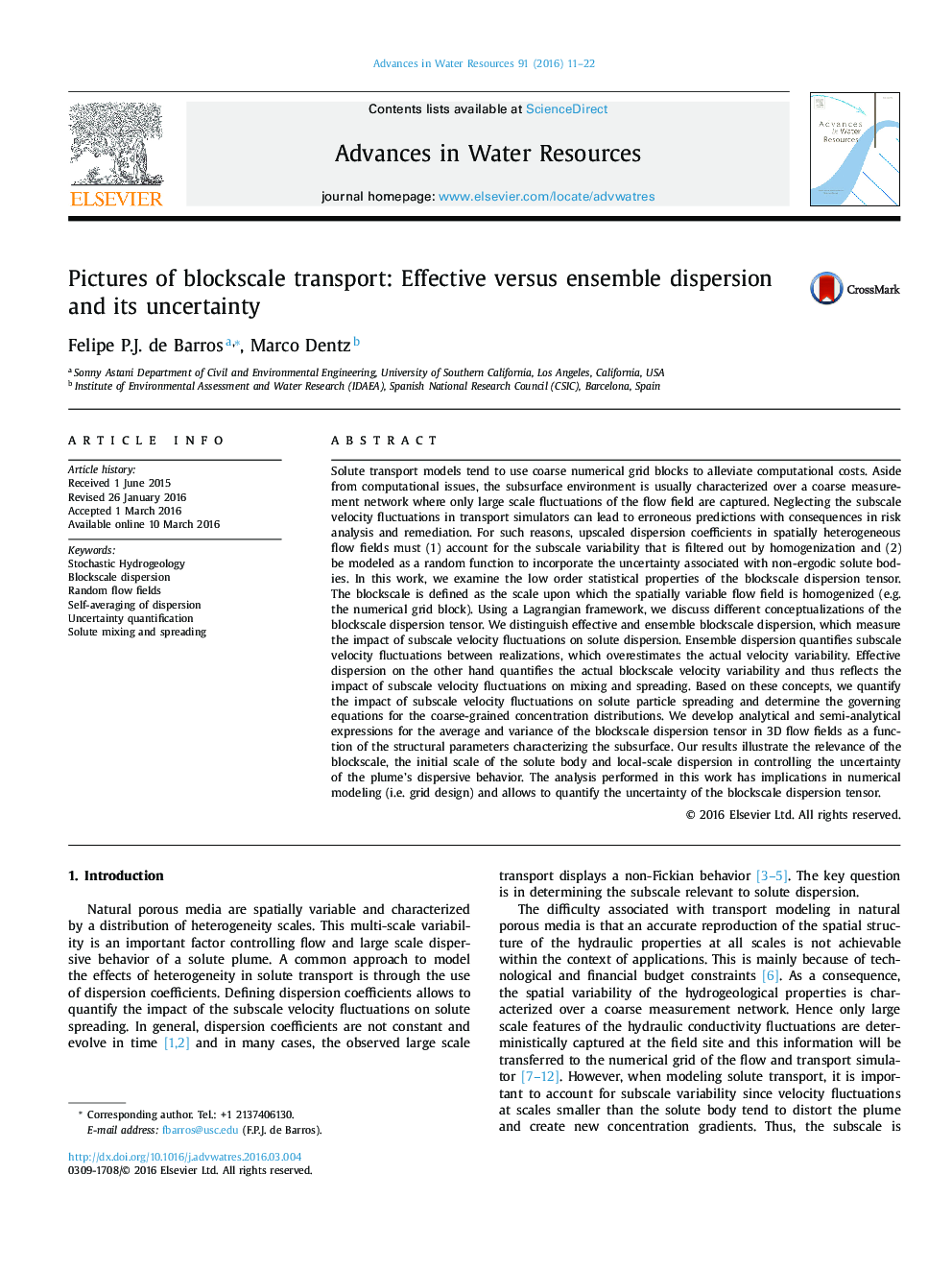| Article ID | Journal | Published Year | Pages | File Type |
|---|---|---|---|---|
| 4525259 | Advances in Water Resources | 2016 | 12 Pages |
•Development of blockscale dispersion concepts and coarse-grained surrogate transport models.•Quantification of the evolution of blockscale dispersion and its uncertainty.•Impact of local scale dispersion, source size, statistical anisotropy of the permeability and blockscale on dispersion variance.
Solute transport models tend to use coarse numerical grid blocks to alleviate computational costs. Aside from computational issues, the subsurface environment is usually characterized over a coarse measurement network where only large scale fluctuations of the flow field are captured. Neglecting the subscale velocity fluctuations in transport simulators can lead to erroneous predictions with consequences in risk analysis and remediation. For such reasons, upscaled dispersion coefficients in spatially heterogeneous flow fields must (1) account for the subscale variability that is filtered out by homogenization and (2) be modeled as a random function to incorporate the uncertainty associated with non-ergodic solute bodies. In this work, we examine the low order statistical properties of the blockscale dispersion tensor. The blockscale is defined as the scale upon which the spatially variable flow field is homogenized (e.g. the numerical grid block). Using a Lagrangian framework, we discuss different conceptualizations of the blockscale dispersion tensor. We distinguish effective and ensemble blockscale dispersion, which measure the impact of subscale velocity fluctuations on solute dispersion. Ensemble dispersion quantifies subscale velocity fluctuations between realizations, which overestimates the actual velocity variability. Effective dispersion on the other hand quantifies the actual blockscale velocity variability and thus reflects the impact of subscale velocity fluctuations on mixing and spreading. Based on these concepts, we quantify the impact of subscale velocity fluctuations on solute particle spreading and determine the governing equations for the coarse-grained concentration distributions. We develop analytical and semi-analytical expressions for the average and variance of the blockscale dispersion tensor in 3D flow fields as a function of the structural parameters characterizing the subsurface. Our results illustrate the relevance of the blockscale, the initial scale of the solute body and local-scale dispersion in controlling the uncertainty of the plume’s dispersive behavior. The analysis performed in this work has implications in numerical modeling (i.e. grid design) and allows to quantify the uncertainty of the blockscale dispersion tensor.
